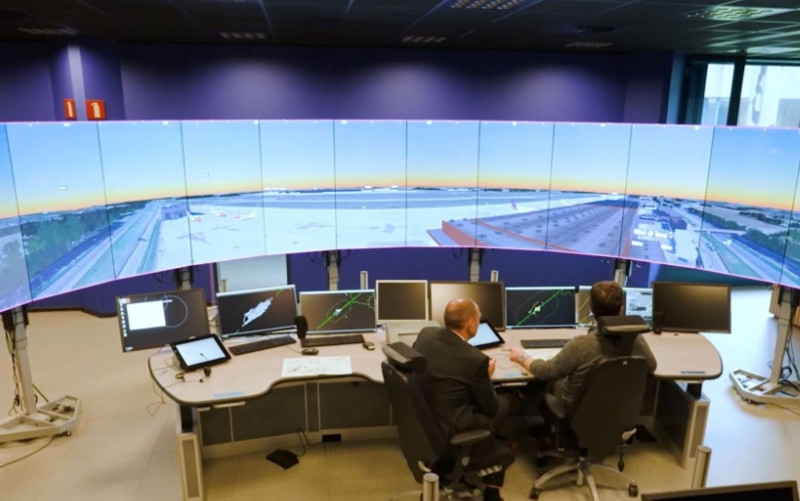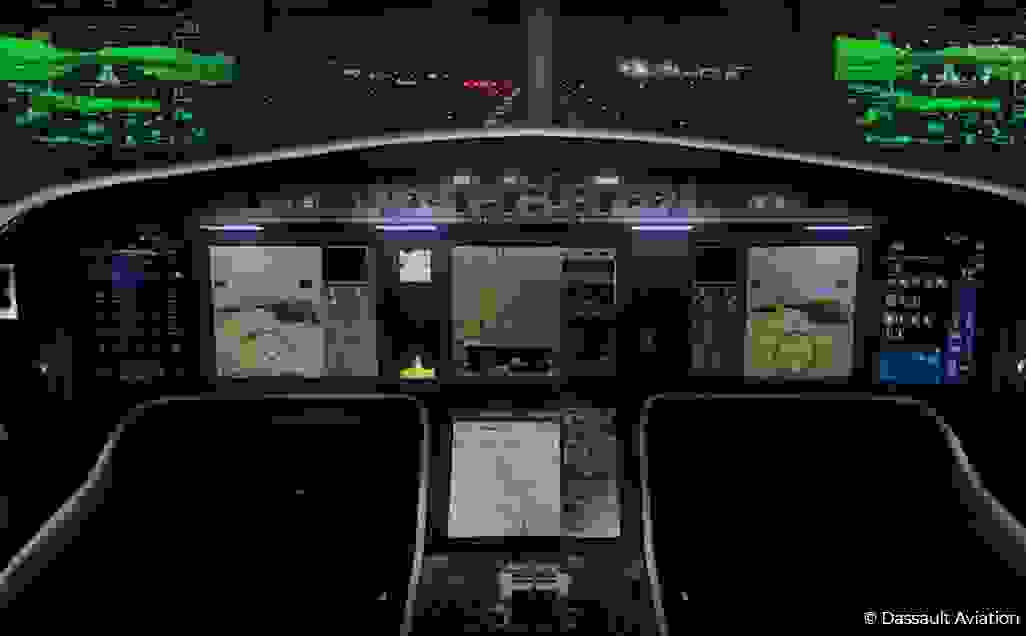skeyes and SkeyDrone ready for the future of drone traffic

In the beginning of 2020, skeyes founded a commercial subsidiary, SkeyDrone.
A well-considered choice that underlined skeyes' ambition to continue playing a pioneering role in Europe to enable the safe and efficient integration of drones into airspace. Where are skeyes and SkeyDrone one year later? Which projects have been accomplished and what can we expect in the near future? Peggy Devestel, COO of skeyes, and Hendrik-Jan Van Der Gucht, Managing Director of SkeyDrone explain the plans.
Pioneer
skeyes was among the very first ANSPs to realise that the lightning-fast development of drones would play an important role in the company's future. Therefore, from the very beginning of this innovative sector, it played a proactive role in numerous research and development projects, in close cooperation with various Belgian and European stakeholders.
The safety of manned air traffic is and will remain skeyes' number one priority. Step by step, unmanned aerial vehicles (drones) will be integrated in a safe and efficient manner into manned air traffic.


From left to right: Hendrik-Jan Van Der Gucht, Managing Director of SkeyDrone, and Peggy Devestel, Chief Operations Officer of skeyes
Q1: “Peggy, why has skeyes created a subsidiary?”
Peggy Devestel:
“skeyes was one of the first ANSPs in Europe to prepare for the integration of unmanned drone traffic.
To name but a few initiatives: in 2018, skeyes - in collaboration with the Belgian Civil Aviation Authority - launched the droneguide app: an online software platform that intuitively indicated in which parts of our airspace drones could or could not be flown based on the former Belgian drone legislation. Using this tool, professional drone pilots could also obtain the necessary authorisations and report their flights before carrying them out in controlled airspace.
Furthermore, skeyes has participated in several national and European pilot projects, mainly with a view to exploring and testing our future role in U-space. The most ambitious project was undoubtedly the EU-funded SAFIR project in 2019. With a consortium of 11 international companies - including some big players such as Amazon - we demonstrated in a very complex environment - the port of Antwerp and part of the Antwerp CTR - how various practical applications with drones could be orchestrated while safely using new operational concepts and technologies. It was Unmanned Traffic Management put into practice. Besides the technical possibilities and challenges - such as drone detection - these tests provided us with a great deal of knowledge about the roles we could take in the future U-space landscape, which we expect by 2023.
The creation of the SkeyDrone subsidiary was a necessary and logical step to maintain our position as European leader.
SkeyDrone is an important instrument in the broader drone strategy of skeyes, which will focus on the development and marketing of commercial services, including UTM/U-space and drone detection.
Through SkeyDrone, we also want to gather knowledge and develop technology that we can also use for ATM in the future in order to evolve towards a hybrid airspace model where ATM and UTM are jointly integrated.”
Q2: “Hendrik-Jan, what are the specific missions of SkeyDrone?”
Hendrik-Jan Van Der Gucht:
“The expertise we have gained and the pioneering role that skeyes plays have allowed us to start from a solid base. SkeyDrone's business plan is built around three pillars or categories of services: managing drone traffic, offering data analytics services or drones as data collectors, and providing solutions in the area of drone detection and protection.
When it comes to managing drone traffic, we need to distinguish between the periods before and after the European UAS regulations come into force, which are expected in 2023. Today, we provide UTM solutions, both software and hardware, to managers of so-called UAS geographical zones, including skeyes. By 2023, we aim to become one of the first U-space service providers (USSP) in Europe.
In the coming years, we will play a central role with Skeydrone in the preparations for the implementation of U-space in Belgium.
Managing drone traffic goes hand in hand with being able to detect and identify drones. You can make the comparison with ATM and Surveillance. To this end, SkeyDrone is developing the necessary expertise and a broad range of products and services in the field of cooperative and non-cooperative drone detection. The use of both technologies and the integration with UTM software allow us to distinguish authorised from unauthorised drone flights. At the end of March, we are planning a first major demonstration of such an integrated solution at Brussels Airport.“
Peggy adds:
“Also within skeyes, an expertise around drones will be maintained. Next to our role of geo-zone manager in controlled airspace today, we want to include the role of Common Information Service Provider in the U-space landscape. It will act as a central player that takes care of the exchange of critical manned and unmanned flight information between the operational units of skeyes, the U-space service providers and various authorities through an open platform.
A role that is an extension of what we already do today in manned aviation, namely in the field of Aeronautical Information Management.”
Q3: “Hendrik-Jan, what is the current product and service range of SkeyDrone? Who are your partners and customers?”
Hendrik-Jan Van Der Gucht:
“Today, SkeyDrone offers a wide range of products and services that enable safe and efficient drone operations in all types of airspace. We have shaped our offer through a combination of our own internal developments and the establishment of commercial partnerships with two Belgian technology companies, Unifly and Senhive.
To managers of UAS geographical zones, such as ANSPs, ports and nuclear power plants, and operators of critical infrastructure and sites, such as industrial complexes and festivals, we offer solutions that allow for efficient control of the safety and security risks associated with drone flights.
We offer solutions to drone operators that enable them to plan and execute flights in the safest and most efficient way. We focus on providing consultancy and developing technologies to enable BVLOS or 'beyond visual line of sight' flights.
In terms of data analytics services, we do not yet have a concrete offer. At the end of 2020, we joined forces with Proximus and DroneMatrix, a Belgian drone technology company, to develop a platform that allows drones to perform missions 'on demand' for business purposes: the so-called '6th NeTWorK'. Later this year, we plan to carry out the first tests and demonstrations for this at various locations in Belgium.”


The 'drone-in-a-box' technology by DroneMatrix
Q4: “What are the main achievements of SkeyDrone to date?”
Hendrik-Jan Van Der Gucht:
“2020 has also been challenging for SkeyDrone because of the COVID-19 crisis and its impact on the aviation sector in general, and skeyes and the airport community in particular.
Nevertheless, we can look back on our first year of operations with some pride. The greatest achievement is undoubtedly the fact that, in a record time of just a few months, we managed to develop an operational software for skeyes.
This software, the so-called 'Drone Service Application', allows skeyes to manage drone flights in the vicinity of Belgian airports that fall under the responsibility of skeyes. This development is the result of a very intense and fruitful cooperation between skeyes and SkeyDrone.”
Peggy Devestel:
“With the implementation of the harmonised European legislative framework for the operation of drones, skeyes took the opportunity to provide drone operators with easy access to the lowest volumes of controlled airspace. In this context, the geo-zone for drones was divided into different areas, with less stringent requirements the further the aircraft is from an airport.
Thanks to the digital platform developed by SkeyDrone, we have taken the next step in the digitalisation of our towers and we are better armed to realise our ambitions in the drone landscape.”
Hendrik-Jan Van Der Gucht:
“Of course, this development is not our only achievement to date. Last year was mainly marked by the start-up and composition of the core team, as well as the conclusion of partnerships with various technology companies and the telecom operator Proximus. These collaborations allow us to offer a more extensive range of products and services. We have also completed a number of successful projects in the area of drone detection and are currently carrying out a study together with Deloitte and Senhive on drone protection of nuclear installations for the European Commission.”
Q5: “What are the future drone projects of SkeyDrone and skeyes?”
Hendrik-Jan Van Der Gucht:
“In addition to the further expansion of the company, in 2021 we will lead the Belgian demonstrations within the framework of two European U-space/Urban Air Mobility projects: CORUS-XUAM and SAFIR-Med. SAFIR-Med stands for ‘Safe and Flexible Integration of Advanced U-space Services for medical Air Mobility’. In the latter project, both skeyes and SkeyDrone are active. Both projects are funded by Europe and will run for about two years.”
Peggy Devestel:
“Drones are emerging as a viable solution for urgent and reliable medical transport. SAFIR-Med will demonstrate how drones can be used to support European healthcare. One of the aims is to accelerate the introduction of drones into the healthcare system in a safe, sustainable and socially acceptable way. The project will perform three flight demonstrations of medical urban air mobility. These demonstrations will take place in cooperation with health care actors such as hospitals and medical centres in the cities of Antwerp, Aachen, Heerlen and Maastricht.
The results of the SAFIR-Med project will also enable European cities to familiarise themselves with their role in U-space, to include urban air mobility in their urban development agendas and to consider the use of drone technology for the benefit of their citizens.“
Hendrik-Jan Van Der Gucht:
“Both CORUS-XUAM and SAFIR-Med are dedicated to U-space and Urban Air Mobility. In both projects we will show how U-space can be implemented in an urban environment in the next decade. The findings of both projects will be shared with the European regulatory authorities, SJU, EC, EASA, and standardisation organisations, EUROCAE.”
SkeyDrone and skeyes are ready to take on their role in a new era of aviation and ensure the safety of all air traffic.
In the coming months and years, we will keep all concerned informed of the main developments and projects of both skeyes and SkeyDrone in this innovative sector.





The project SAFIR-Med has received recognition and funding from the European Union’s Horizon 2020 research and innovation programme under Grant Agreement No 101017701 under the topic “SESAR-VLD2-03-2020: U-space capabilities and services to enable Urban Air Mobility”.




